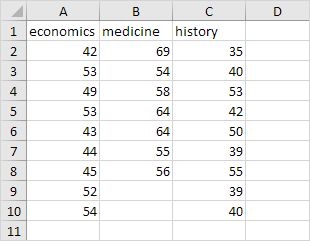

Assumption #6: There needs to be homogeneity of variances for each combination of the groups of the two independent variables.Assumption #5: Your dependent variable should be approximately normally distributed for each combination of the groups of the two independent variables.

Outliers are data points within your data that do not follow the usual pattern Assumption #4: There should be no significant outliers.Assumption #3: You should have independence of observations, which means that there is no relationship between the observations in each group or between the groups themselves.Assumption #2: Your two independent variables should each consist of two or more categorical, independent groups.Assumption #1: Your dependent variable should be measured at the continuous level (i.e., they are interval or ratio variables).There some assumptions to do Two way ANOVA or we can say that these are the conditions for Two way ANOVA

The interaction term in a two-way ANOVA informs you whether the effect of one of your independent variables on the dependent variable is the same for all values of your other independent variable (and vice versa). For example, you may want to determine whether there is an interaction between physical activity level(IV) and gender(IV) on blood cholesterol concentration(DV) in children. The primary purpose of a two-way ANOVA… is to understand if there is an interaction between the two independent variables on the dependent variable. The two-way ANOVA compares the mean differences between groups that have been split on two independent variables (called factors).


 0 kommentar(er)
0 kommentar(er)
